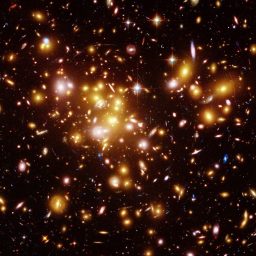Coffee talks
Friday 29/04/2022 @ 11:30, On-line - meet.google.com/sue-bwvk-axf
Erik Osinga (Leiden University), "Particle acceleration and magnetic fields in galaxy clusters"
Merging galaxy clusters often host an impressive collection of diffuse radio sources, broadly categorised into radio halos, radio shocks and fossil plasma sources. This radio emission can be explained with relativistic electrons that are accelerated by shocks and turbulence in the intracluster medium, which emit synchrotron radiation in the presence of the cluster magnetic field. However, the details of both the magnetic fields and the acceleration mechanisms in clusters are not fully understood. Due to the often extremely steep spectral indices of the diffuse radio emission, it is best studied at low frequencies. However, for a long time, the lowest frequency window available to ground-based telescopes (10-100 MHz) has remained largely unexplored as RFI and calibration problems related to the ionosphere become severe. LOFAR is the only telescope equipped to make high-resolution (45’’) deep (~10 mJy/beam) images of the sky at 30 MHz. In this talk, I will present results of 16 hours of LOFAR observations from 16-64 MHz on the famous cluster Abell 2256 with the aim of studying acceleration mechanisms at the lowest frequencies. Additionally, I will also briefly discuss how we can study the magnetic field properties of galaxy clusters through radio source depolarisation by presenting VLA observations of a sample of 124 nearby galaxy clusters. With these observations, we have detected the imprint of the cluster magnetic field through a clear depolarisation trend, with sources at smaller projected distances to the cluster centre showing more depolarisation.

